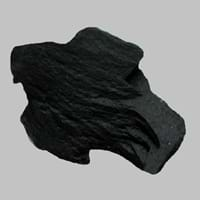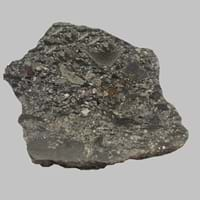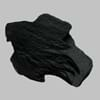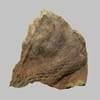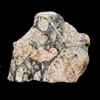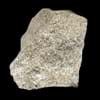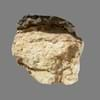Definition
Lignite is a soft brownish coal which shows traces of plants and is intermediate between bituminous coal and peat
An iron rich extrusive rock found as a member of the alkali basalt magma series
Origin
France
Isle of Mull, Scotland
Discoverer
Unknown
Ben More
Etymology
From French, Latin lignum wood + -ite1
From the name of discoverer, Ben More
Class
Sedimentary Rocks
Igneous Rocks
Sub-Class
Durable Rock, Soft Rock
Durable Rock, Medium Hardness Rock
Group
Not Applicable
Volcanic
Other Categories
Coarse Grained Rock, Fine Grained Rock, Medium Grained Rock, Opaque Rock
Fine Grained Rock, Opaque Rock
Texture
Amorphous, Glassy
Glassy, Massive, Porphyritic, Scoriaceous, Trachytic, Vesicular
Color
Black, Brown, Dark Brown, Grey, Light to Dark Grey
Black, Brown, Light to Dark Grey
Durability
Durable
Durable
Appearance
Veined or Pebbled
Rough and Dull
Interior Uses
Not Yet Used
Floor Tiles, Homes, Hotels, Kitchens
Exterior Uses
Not Yet Used
As Building Stone, Paving Stone, Garden Decoration, Office Buildings
Other Architectural Uses
Not Yet Used
Curbing
Construction Industry
for Road Aggregate, Steel Production
As Dimension Stone, Cobblestones, Rail Track Ballast, Roadstone
Medical Industry
Not Yet Used
Not Yet Used
Antiquity Uses
Not Yet Used
Artifacts, Monuments, Sculpture
Commercial Uses
Electricity Generation
Commemorative Tablets, Creating Artwork, Curling
Types
Xyloid Lignite or Fossil Wood and Compact Lignite or Perfect Lignite
Alkaline Basalt, Boninite, High Alumina Basalt, Mid Ocean Ridge Basalt (MORB) and Tholeiitic Basalt
Features
Generally rough to touch, Helps in production of Heat and Electricity, Used as fossil fuel
Has High structural resistance against erosion and climate, Very fine grained rock
Archaeological Significance
Monuments
Not Yet Used
Used
Famous Monuments
Not Applicable
Data Not Available
Sculpture
Not Yet Used
Used
Famous Sculptures
Not Applicable
Data Not Available
Figurines
Not Yet Used
Used
Formation
Coal formation takes place due to accumulation of plant debris in a swamp environment. The Coal formation process continues, as peat turns into lignite brown or black coal at increasing heat and pressure.
Benmoreite is a type of Igneous rock which is formed through the cooling and solidification of lava or magma. It forms with or without crystallization, either below the surface as intrusive rocks or on the surface as extrusive rocks.
Mineral Content
Not Available
Alkali feldspar, Biotite, Olivine, Plagioclase, Pyroxene, Sodic plagioclase
Compound Content
Carbon, Hydrogen, Nitrogen, Oxygen, Sulphur
Aluminium Oxide, CaO, Iron(III) Oxide, FeO, Potassium Oxide, MgO, MnO, Sodium Oxide, Phosphorus Pentoxide, Silicon Dioxide, Titanium Dioxide
Types of Metamorphism
Not Applicable
Burial Metamorphism, Cataclastic Metamorphism, Contact Metamorphism, Hydrothermal Metamorphism, Impact Metamorphism, Regional Metamorphism
Types of Weathering
Biological Weathering, Chemical Weathering, Mechanical Weathering
Biological Weathering, Chemical Weathering, Mechanical Weathering
Types of Erosion
Chemical Erosion, Water Erosion, Wind Erosion
Chemical Erosion, Coastal Erosion, Glacier Erosion, Sea Erosion, Water Erosion, Wind Erosion
Grain Size
Medium to Fine Coarse Grained
Fine Grained
Fracture
Conchoidal
Conchoidal
Porosity
Highly Porous
Less Porous
Luster
Dull to Vitreous to Submetallic
Earthy
Compressive Strength
Not Available
Cleavage
Non-Existent
Perfect
Toughness
Not Available
2.3
Specific Gravity
1.1-1.4
2.8-3
Transparency
Opaque
Opaque
Density
800-801 g/cm3
2.9-3.1 g/cm3
Resistance
Heat Resistant
Heat Resistant, Pressure Resistant, Wear Resistant
Deposits in Eastern Continents
Asia
Bangladesh, Burma, Cambodia, China, India, Indonesia, Kazakhstan, Malaysia, Mongolia, Pakistan, Turkey, Vietnam
India, Russia
Africa
Botswana, Kenya, Morocco, Mozambique, South Africa, Tanzania
South Africa
Europe
Belgium, Bulgaria, England, France, Germany, Greece, Hungary, Kosovo, Netherlands, Norway, Poland, Romania, Serbia, Slovakia, Slovenia, The Czech Republic, Ukraine, United Kingdom
Iceland
Others
Not Yet Found
Not Yet Found
Deposits in Western Continents
North America
Canada, Mexico, USA
Canada, USA
South America
Brazil, Chile, Colombia, Venezuela
Brazil
Deposits in Oceania Continent
Australia
New South Wales, Queensland, Victoria
Not Yet Found
